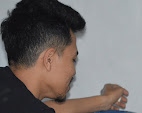There's no doubt that photography grounds itself in being able to take factual scenes with objectivity. Most people might argue that editorial photography really began with the advent of Photoshop and its related programs, but almost 100 years ago, one pioneering artist was blurring the lines between photography and art, even advocating for photography as art. This is the ground breaking work of Man Ray. (WARNING: THIS POST CONTAINS NUDITY).
Man Ray was born Emmanuel Radnitzky in 1890, but due to the growing anti-semitesm in the Philadelphia neighborhood he grew up in, his parents changed their surname to Ray. His friends called him Manny, which he shortened to Man, which eventually led to his now famous name, Man Ray.
Ray displayed great enthusiasm for the visual arts as a child, learning how to draft in primary school and supplementing his education with frequent visits to local museums. After graduating, he decided to pursue a career as an artist, despite being offered a scholarship in architecture. Ray studied at a couple of art schools before dropping out and teaching himself the rest of the way. Slowly, he worked towards become a professional painter, and he soon started receiving commissions as an artist and illustrator.
As an artist, Ray leaned towards the popular cubist movement of that time, looking for inspiration in prominent painters such as Marcel Duchamp who would later become one of his closest friends and frequent sitters. Ray continued to develop in his paintings, but it was only in 1918 that he started to work on photography seriously. Shortly after, he began associating himself with the Dada movement, producing even more avant-garde paintings and scultptures.
The experimental works he did with his paintings also translated into his photography, with many of his images reflecting classical techniques combined with unorthodox photographic processes. Ray invented the Rayograph, more popularly known as the Photogram, which involved placing objects on light-sensitive paper and exposing it directly to light, creating shadows and silhouettes. Ray also developed the Solarisation Technique which creates light areas in a photograph to appear dark or vice versa (some of the photographs in this post use this technique).
Ray became a highly successful portrait photographer, with many of his artist friends agreeing to sit for hum. Not content with the still medium, Ray later went on into film, involving himself with a series of avante-garde movies in the 1920s. In his later life, the artist continued to work with traditional paint, photography and film, but always seeking to find new ideas, both in terms of subject and execution.
Photography for Ray wasn't so much as medium to simply document what was in front of him. Rather, it was a way for him to to explore his dreams and ideas in a novel manner. Indeed, his most famous photographs aren't those that came straight from the wet plate, but those that were heavily edited or "photoshopped" using the earliest instruments of photographic editing. For Ray, the ultimate goal of photography in his own words, was to "... produce a photograph that would not look like a photograph".
The Man Ray Trust is the official trust site for the late artist. The Man Ray Photo website has extensive collections showing how the photographer made photography as art. Some of the many books on the artist include Man Ray, Photographs by Man Ray: 105 Works, 1920-1934, and Man Ray Photographs.





















No comments:
Post a Comment